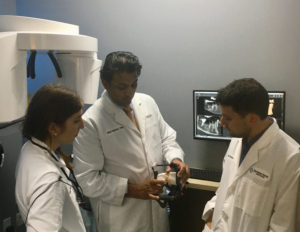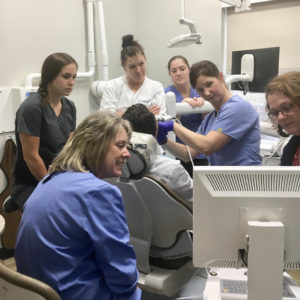When doctors and office managers are feeling discouraged and frustrated about managing employees they often say to me, “Do I have to tell someone 100 times the way I want it done? Why can’t they get it the first time?” Or, “Shouldn’t they already know that? Why should I have to explain that to someone?” Saying something once will rarely result in compliance, or a desired behavior change. But when the leaders in the practice develop the habit of forming well-drawn expectations and then apply a systematic approach to presenting and reinforcing them it can have a huge impact on the success of their business.
Your expectations must be clearly defined first, by you, in your own mind. Clarifying “the what” and “the how” of doing something is the doctor or manager’s first step in the process. Let’s say you’ve decided that you want to work on improving the patient experience for new patients at their very first appointment in your office. You would like every new patient you are meeting for the first time in the treatment room after their hygiene appointment to be upright in the chair and facing you eye to eye when you walk into the room. That is a detailed and specific example of “what” you expect. The “how” will require every hygienist and doctor to commit to the actions they must take to situate the patient in the upright position and prime them for meeting you by saying something like, “Hi Dr. Henson this is Alan he is new to our practice. He just had a great cleaning and has some questions for you about replacing a crown on number 13.”
 The next step is to be sure everyone also understands “the why” for the expectation. Compliance is much higher if people who are being asked to do something can comprehend the value and importance of it. Having positive and comfortable interactions with patients whenever there is a transfer of that patient’s care from one person to another in the office, in this case from hygienist to the doctor, improves patient experience and overall impression of the practice. It also improves the communication between clinicians about diagnosing potential treatment, and initiates the presentation of treatment to that patient. Once the value proposition for the new expectation is clear, and the team can see the benefit of consistently executing it, you are nearly there!
The next step is to be sure everyone also understands “the why” for the expectation. Compliance is much higher if people who are being asked to do something can comprehend the value and importance of it. Having positive and comfortable interactions with patients whenever there is a transfer of that patient’s care from one person to another in the office, in this case from hygienist to the doctor, improves patient experience and overall impression of the practice. It also improves the communication between clinicians about diagnosing potential treatment, and initiates the presentation of treatment to that patient. Once the value proposition for the new expectation is clear, and the team can see the benefit of consistently executing it, you are nearly there!
The final, critical, step is how leaders in the organization follow up and reinforce the behavior changes that ensure the expectation is being fulfilled successfully. Follow up includes checking in one on one with team members. It can be the recognition of someone who is ideally performing and even exceeding the expectation at the morning huddle. By identifying the person in a group you are reminding everyone of the expectation and positively reinforcing at the same time. It might be a gentle reminder in the moment if someone has forgotten, or a cue you’ve agreed to ahead of time to remind them of what they should be doing. Larger more challenging expectations might be a regular part of team meeting agendas for months while everyone works to understand, accept and then demonstrate the proficiency to meet the expectation. Providing training, opportunity to practice, and support show that you are committed to helping the team achieve expectations too.
 Clarifying the expectations, big and small, that you have for your practice will make you a better leader and a more successful practice owner or manager. By improving communication in your organization you can have a direct impact on performance. In addition to achieving objectives and goals more effectively the whole practice can function at a higher level. Team morale is boosted when expectations are clear, stress is reduced, problems get solved, patient experience improves and everybody wins.
Clarifying the expectations, big and small, that you have for your practice will make you a better leader and a more successful practice owner or manager. By improving communication in your organization you can have a direct impact on performance. In addition to achieving objectives and goals more effectively the whole practice can function at a higher level. Team morale is boosted when expectations are clear, stress is reduced, problems get solved, patient experience improves and everybody wins.
Helping doctors and managers in the dental field develop leadership skills is a hugely rewarding part of the work I do. If you’d like to learn more about ways to improve communication and team performance let’s meet and discuss innovative customized solutions that can change and grow your practice!

